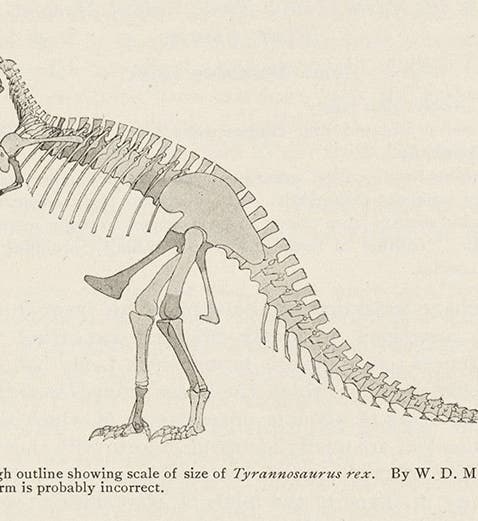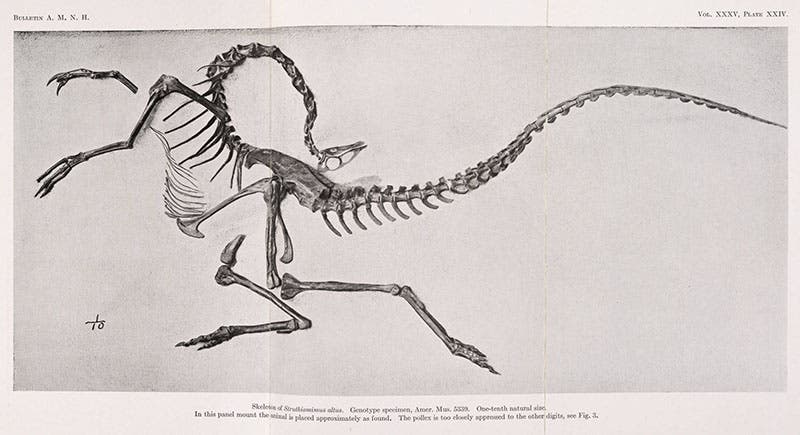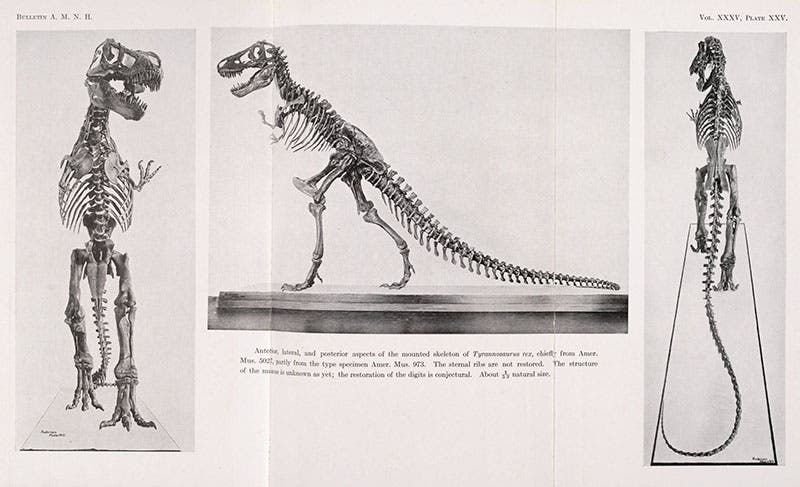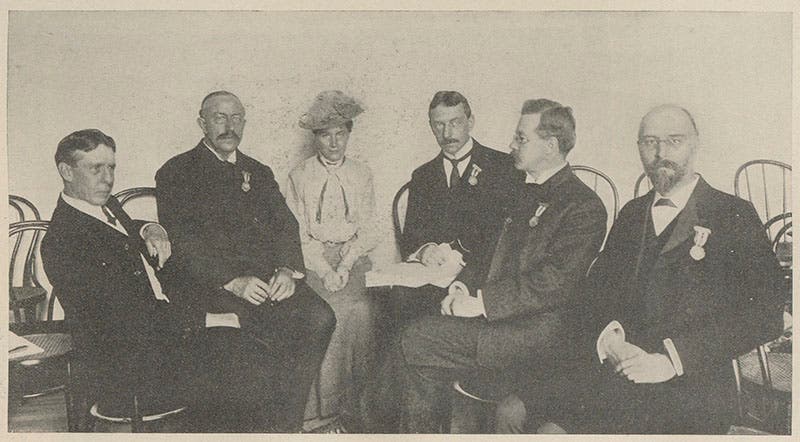Scientist of the Day - Henry Fairfield Osborn
Henry Fairfield Osborn, an American paleontologist, was born Aug. 8, 1857. Osborn named and described some of the most famous dinosaurs in the world, including Tyrannosaurus, Velociraptor, Ornitholestes, Struthiominus, and Oviraptor. Oddly, Osborn did not discover any of these dinosaurs. In the “old days” (the 1820s), dinosaurs such as Iguanodon and Megalosaurus were named and described by their finders, but by the late 19th century, paleontology had become a stratified discipline. Scientists such as Osborn stayed home (in his case, home was the American Museum of Natural History (AMNH) in New York, of which he became President in 1906) and sent others into the field, outdoorsmen like Barnum Brown, Charles Sternberg, and Roy Chapman Andrews. The dinosaur hunters made a good living – some were even independent, selling their finds to the highest bidder – but in exchange for money and support, they gave up the right to publish their discoveries themselves. Occasionally, Osborn would allow his hired hands to publish on their own; so Barnum Brown (who discovered T. rex and Struthiomimus for Osborn) got to publish and name two of his finds, Ankylosaurus and Corythosaurus.
But you have to hand it to Osborn, he was good at the naming business. It is hard to beat Tyrannosaurus and Velociraptor as evocative descriptors. He was even good at choosing an appropriate second name, the species term. The full name of Oviraptor is Oviraptor philoceratops, which means “Egg thief, especially fond of ceratopsians”.
We show here the first attempt to reconstruct Tyrannosaurus rex, in the 1905 paper in which Osborn named it (first image) and a panel mount of the skeleton of Struthiomimus, from the 1916 paper in which Osborn described and named it (second image). The image of the Struthiomimus mount looks like a photograph, but is actually a wash drawing, probably by Erwin Christman.
The third image requires a little further explanation. In 1916, the AMNH mounted their T. rex skeleton. By this time, they had two specimens, and this was the more complete one. Osborn wanted to mount it in a more active pose, much as we do know, but the fossilized bones were so heavy that, even with iron supports, this was the best they could manage (third image).
The fourth image show Ornitholestes, discovered by Peter Kaisen in 1900 and named by Osborn in 1903. We have his original paper and drawing, but we choose here to display Charles Knight’s pencil sketch of 1914. The fifth image shows the shattered skull of Velociraptor, also discovered by Peter Kaisen, which Osborn described and named in a paper of 1924 in American Museum Novitates.
As for a portrait, there are formal portraits available on sites such as Wikipedia, but they show an older Osborn. We prefer a group portrait of 1904, where Osborn is third from the right (sixth image).
Some years ago we organized an exhibition called Paper Dinosaurs, which is still available online. Osborn played a prominent role in our story, with many of his papers on display. If you start here and go forward, you will encounter Osborn entries at items 28a, 30, 32a, 33, 33a, 34, 35, 39, and 43. To get to the “a” entries, you have to go to the main item page and find the link in the text.
Dr. William B. Ashworth, Jr., Consultant for the History of Science, Linda Hall Library and Associate Professor, Department of History, University of Missouri-Kansas City. Comments or corrections are welcome; please direct to ashworthw@umkc.edu.











